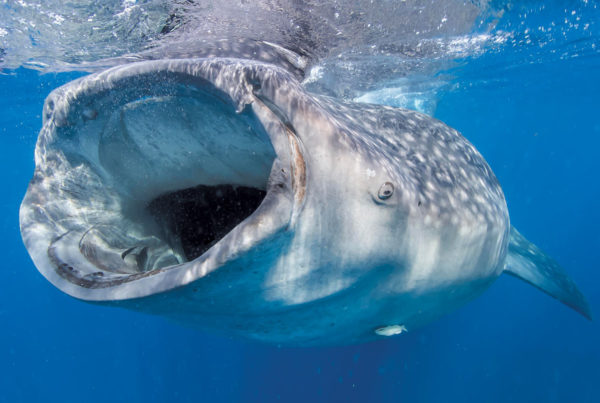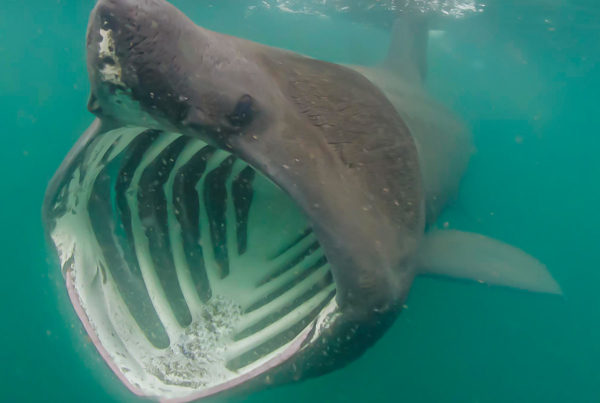While you may be lucky enough to stumble upon a naturally inquisitive blue or mako shark on the edge of one of California’s lush kelp forests, your best bet is to head out to blue water where the continental shelf steepens before plunging into the deep Pacific.
The days of diving into a writhing ball of pelagic predators may be long gone, but with a little patience (and an enticing chum slick) you’ll probably see a fin or two snaking towards your boat.
When the first dinner guest finally arrives, your first conundrum will be whether to slip in for a face-to-face encounter or to quickly start hand-camming over the side of the boat.
Blue sharks are generally quite nonchalant and although they don’t particularly like the noise of scuba, they are often very tolerant of snorkelers.
Conversely, Makos zip in like guided missiles, nervously mouth everything in sight (especially propellers and other metal objects) and then back off to a safe distance well beyond camera range to reassess the situation.
Unfortunately, if the hungry mako can’t identify an actual food source (such as a wounded fish), there’s a good chance that it will disappear after its initial investigation.
Unless you’re poised in your wetsuit with fins and mask at the ready, hand-camming (holding your camera underwater while leaning over the side of the boat) may be the only way to get the money shot.
If you’re lucky enough to encounter a mako that returns to the boat time after time, make sure your camera is preset to mako-mode.
As a rule, shutter speed is the most important variable in shark photography. Blue sharks are casual swimmers built for crossing entire oceans but shortfin makos are the Ferraris of the shark world. Shooting an excited mako at 1/100th of a second will result in little more than a blurred streak across your photograph.
If you have a DSLR, try setting your shutter speed to around 1/500th of a second and working your way UP from there.
That should ensure that you get nice crisp pictures, but unless you want images that look like they were taken at night, you’ll need to compensate for your fast shutter speed by cranking up your ISO sensitivity. Some newer DSLRs are capable of handling ISOs up to 3200 without noticeably increasing noise (graininess) but even if you have an older camera, your best bet is still to shoot fast and either ’embrace the noise’ or reduce it later in Photoshop. You can sometimes salvage a noisy image by completely desaturating the file, which leaves the photo with an acceptably gritty black and white feel.
If you have a point and shoot rig you’ll probably want to set it to “action mode” if it comes with that option. If not, remember to pan with the subject to help keep it sharp.
DSLR divers may want to play around with “shutter priority,” especially if they’re too caught up in the moment to concentrate on F-stops, but be warned; while dancing with makos you will inevitably find yourself spinning in circles to keep them in view. Some shots will be well lit by the sun but others will undoubtedly be backlit. If your camera is set to shutter priority it may struggle to expose the backlit images correctly.
Personally, I prefer to shoot strictly in manual mode so that I can balance natural and artificial light as I see fit.
Speaking of artificial light, don’t neglect your strobes just because you’re working near the surface.
On sunny days, you may think that natural light is the only illumination that you need, especially if there are surface ripples throwing splashes of sunlight across the cobalt blue hides of the sharks. But as dramatic as this can be, a little fill-flash will add a subtle warmth to the shark’s already vibrant colors and add definition to its otherwise beshadowed belly.
Shooting open-ocean sharks in bottomless blue water can be a great way to capture spectacular portraits, but no matter how seriously you take your photography, remember to lower your camera once in a while and enjoy the encounter itself. Not many divers get to spend time with a magnificent mako or witness the elegant lines of a blue shark suspended in the golden rays of the afternoon sun. Soak it in.









